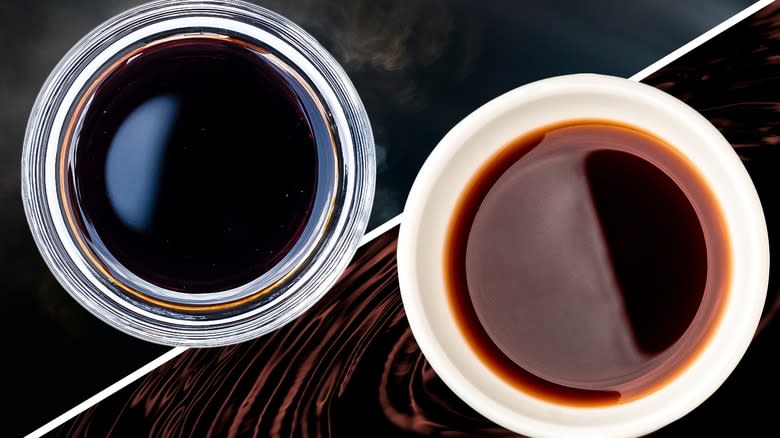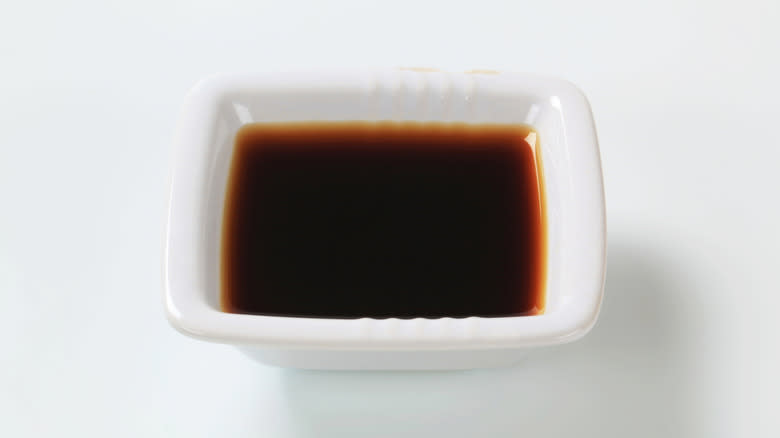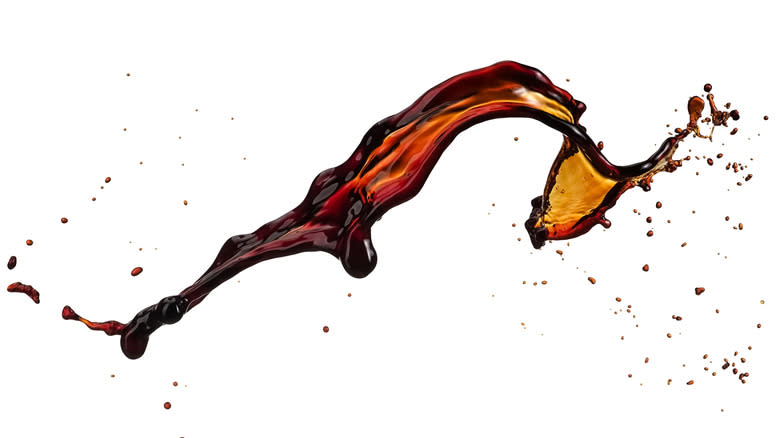Is There A Difference Between Kitchen Bouquet And Liquid Smoke?

Though it might be easy to mistake shallow dishes of Kitchen Bouquet and Liquid Smoke set out on your kitchen counter, these distinct ingredients offer unique culinary advantages for your food and drink recipes. While Kitchen Bouquet is commonly used to add both a subtle savory flavor and a deep earthy color to sauces and soups, Liquid Smoke can boost food and drink recipes with the taste of a smoky campfire.
Food photographers and stylists often use Kitchen Bouquet to create aesthetically pleasing images, as the syrupy liquid can be dropped into water or brushed onto surfaces to deepen hues and create colorful contrasts on plates, ingredients, and dishware. If you want to play with the flavor volumes of your food, Kitchen Bouquet's impact is more visual than in taste, but if you are looking to dash a bit of smokey flavor into your drinks and food recipes without lighting up a fire, Liquid Smoke might be the better grab.
Read more: Styles Of Regional BBQ In The US
A Shortcut For Culinary Aesthetics

Though the taste of Kitchen Bouquet is slight, the appearance is mighty, and chefs only need a few drops of the ingredient to deepen the hues of sauces and stews. Made primarily of heated caramel color, a food additive made by the caramelization of sugars, the concentrated vegetable base doesn't add much in the way of taste to foods and drinks. If you think caramel color would lend sweetness to this culinary ingredient, any sugary taste dissipates as the sugars are heated, leaving behind a dark-colored product with only the slight taste of the savory base.
We understand that not every chef has the time and patience to wait for dishes to brown perfectly and achieve Instagram-worthy color palettes; Kitchen Bouquet is your shortcut to a picture-perfect dish with little effort. To bring a rich aesthetic to soups, sauces, or stews, add Kitchen Bouquet conservatively, starting with only a drop or two, and adjust after stirring. No one needs to know your short-cut secrets from inside your kitchen.
The Taste Of Smoke Without The Fire

If you're looking to give your food and drinks an actual boost of smoky flavor, Liquid Smoke can deliver. This ingredient isn't simply for show; flavor compounds from wood-burned smoke are suspended in liquid after smoke from a fire is condensed. First marketed in 1895, the product remains a popular addition to recipes today, appearing in cocktails and flavoring main dishes without the need for any backyard fires or lit pieces of coal.
Liquid Smoke can be purchased in different flavored varieties, so check labels as you keep your recipes in mind. Whether you want to inject a burst of mesquite, pecan, applewood, or hickory into your dishes, Liquid Smoke can come to the rescue as you mix up marinades and whip up barbecue sauces for tonight's dinner party. Liquid Smoke is also used to flavor other grocery items, like smoked meats, smoked Gouda cheese, and sausage products. No grill or smoker is required.
Though Kitchen Bouquet and Liquid Smoke may present similarly when placed into unmarked dishes, look at product labels carefully before plopping ingredients into your planned menu items. The taste and the appearance of your recipes count on your careful attention.
Read the original article on Tasting Table.

